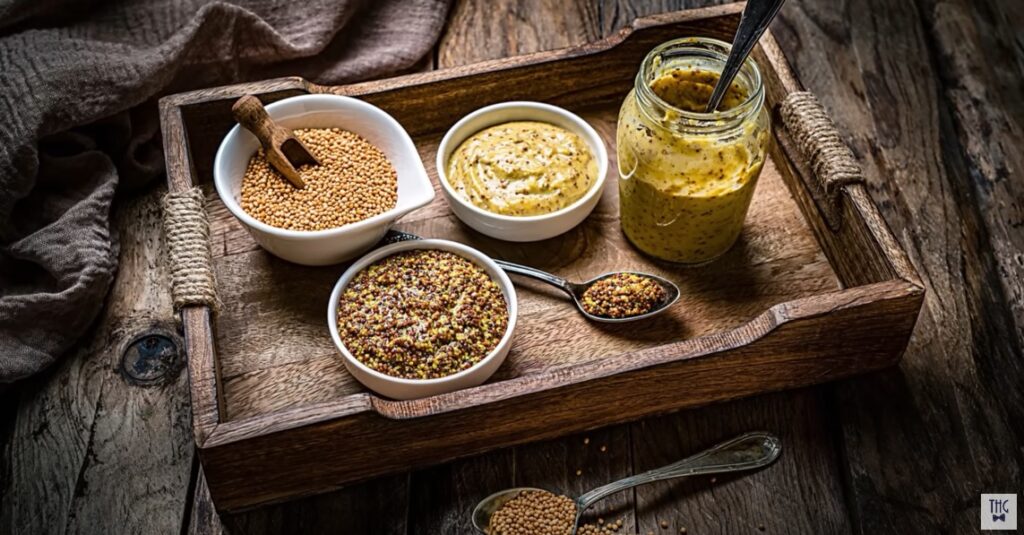Mustard: History And Ways To Use

Mustard has been a popular spice and condiment for thousands of years, with a long and fascinating history. This versatile spice adds flavor and depth to many different types of cuisine, including European, African, Indian, and Middle Eastern dishes. Here, we’ll explore the history of mustard, what it is, and some popular ways to use this spice.
What is Mustard?
Before we dive into the history of mustard, let’s define what it is. Mustard is a plant that belongs to the Brassicaceae family. This family includes other popular vegetables like broccoli, cauliflower, and cabbage. The seeds of the mustard plant are used to create the spice that we know as mustard. Mustard seeds come in three different colors: yellow (also known as white), brown, and black.
Yellow mustard is commonly used in American-style hot dogs and on sandwiches. Brown mustard is popular in European cuisine, particularly in German or British dishes like sausages or plated meats. Black mustard is often used in Indian cooking, added to curries and chutneys for an earthy flavor.
In addition to its use as a condiment or spice, mustard also has medicinal properties. It’s said to be an excellent source of antioxidants, which can help reduce inflammation in the body. Mustard has been used for centuries as a remedy for digestive issues, respiratory problems and as an antidote to poison.
History of Mustard
Mustard has been used as a condiment for over 5,000 years. In fact, seeds from the mustard plant have been found in Egyptian tombs dating back to 3000 BCE. The ancient Greeks also used mustard as a spice and medicine, while the Romans added it to their cuisine as well. Over time, mustard grew in popularity throughout Europe, becoming especially common in France.
Mustard was originally made by grinding mustard seeds into a paste with vinegar or wine, and then adding herbs and spices to the mix. France is particularly well-known for its Dijon mustard, named after the city where it originated. In the 1600s, a popular condiment called “mustard oil” was created in England by blending mustard with oil, which was used as a topical treatment for a variety of ailments.
During the 18th and 19th centuries, mustard became popular in Europe as a condiment for meat dishes. In the 1920s, mustard grew in popularity in America, and large companies like Grey Poupon began to mass-produce this condiment. Today, mustard is a staple ingredient in many kitchens around the world.
Types of Mustard
As we mentioned earlier, there are three main types of mustard seeds: yellow (white), brown, and black. Yellow mustard seeds are often used to make American-style mustard, while brown mustard seeds are used to make Dijon-style mustard. Black mustard seeds are popular in Indian cuisine.
There are many different types of mustard that you can buy at the grocery store. Here are some of the most common:
- Classic yellow mustard: This is a mild mustard made with yellow mustard seeds, vinegar, water and sugar.
- Dijon mustard: Made with brown or black mustard seeds, white wine (or white wine vinegar), water and salt.
- Honey mustard: This sweet and tangy condiment is made by mixing together mustard with honey and other seasonings like garlic or onion.
- Grainy or whole grain mustard: This type of mustard is made with whole mustard seeds that are left intact, giving it a coarser texture.
- Spicy brown or deli-style mustard: This type of mustard is made with brown or black mustard seeds along with vinegar or beer. It has a spicier flavor than yellow or Dijon mustards.
Ways to Use Mustard
Mustard is a versatile spice that can be used in many different types of dishes. Here are some popular ways to use this flavorful condiment:
- As a marinade – Mustard works well as the base for a tasty marinade. Simply combine mustard with olive oil, vinegar, lemon juice, herbs and spices, and then brush it onto chicken, seafood or vegetables before grilling or roasting.
- In salad dressings – Mustard adds a tangy flavor to salad dressings. Try whisking together mustard with vinegar, oil and herbs for a delicious vinaigrette.
- As a seasoning – Mustard can be used as a seasoning for meat dishes like pot roast or roasted chicken. Mix mustard with herbs and spices and rub it onto the meat before cooking.
- In sauces – Mustard can add depth to sauces like barbecue sauces or gravies. Try whisking together mustard with honey, Worcestershire sauce and soy sauce for a delicious dipping sauce.
- For sandwiches – Mustard is a classic condiment for sandwiches. Try spreading a teaspoon of Dijon mustard onto turkey or chicken sandwiches for added flavor.
- In soups and stews – Mustard can be used in soups and stews to add flavor and depth. Add mustard to chicken noodle soup or beef stew for an extra kick of flavor.
- In deviled eggs – Mix mustard with mayonnaise, vinegar and seasonings to create a delicious filling for deviled eggs.
- On hot dogs – Classic yellow mustard is a staple on hot dogs in America. Add this condiment along with ketchup, relish and onions for the perfect hot dog topping.
Mustard is a popular spice that has been used for thousands of years in various cultures around the world. The three main types of mustard seeds include yellow, brown and black, each adding their own unique flavor profiles to dishes. Mustard is a versatile ingredient that can be used in marinades, salad dressings, sauces, and on its own as a seasoning or condiment. Whether you’re adding mustard to a charcuterie board or using it to season your favorite protein, this spice is sure to add flavor and depth to any dish.